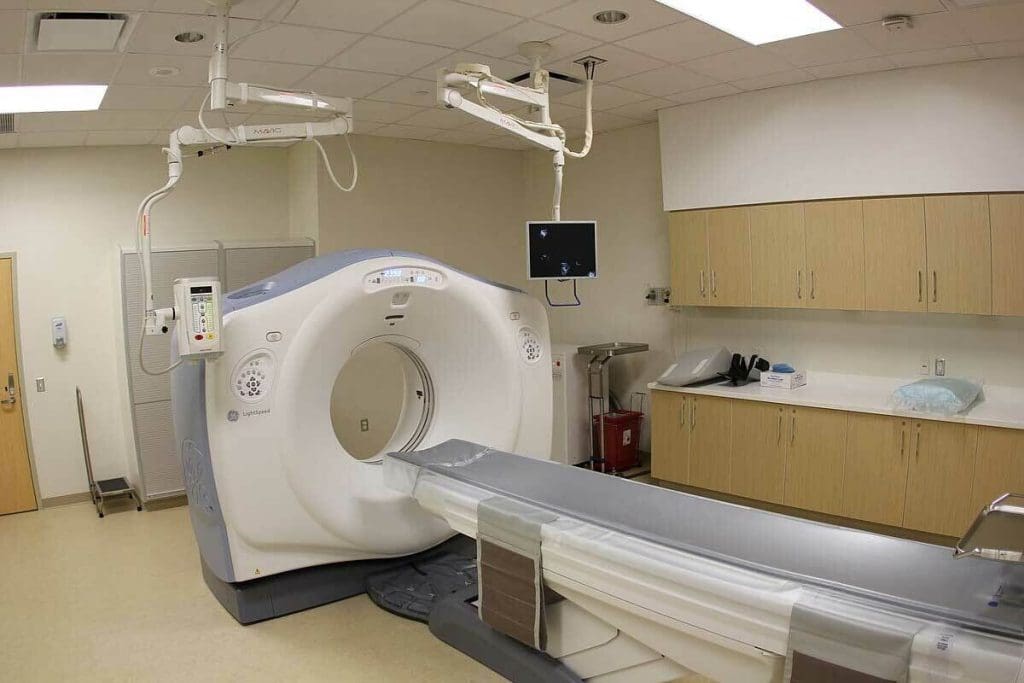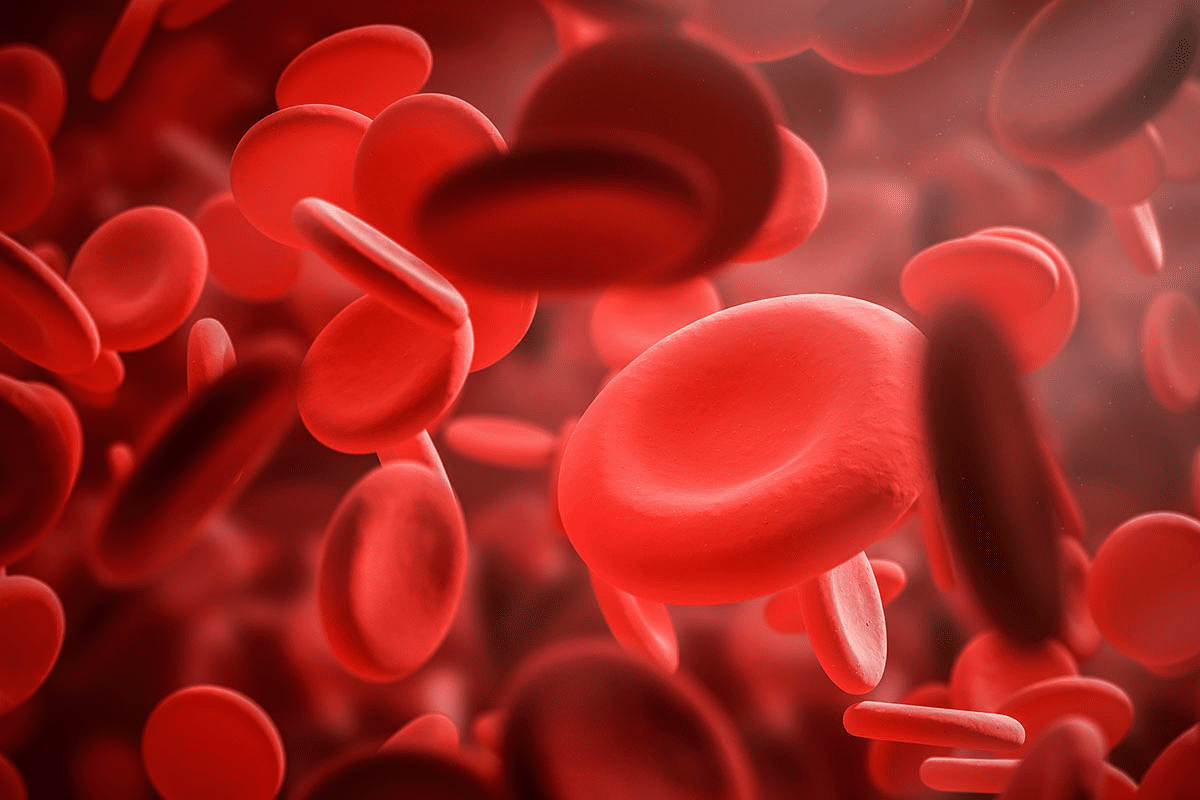Last Updated on November 27, 2025 by Bilal Hasdemir

At Liv Hospital, we know how vital diagnostic imaging is in today’s healthcare. A CAT scan cat, also known as a CT scan, makes detailed pictures of the body’s inside using X-rays and computers.
CAT scans are key in many medical areas like oncology, neurology, and emergency care. They help us give accurate diagnoses and treatment plans to our patients.
We will look into what CAT scans mean, their definition, and medical terms. This will give you a full grasp of this important diagnostic tool.
Key Takeaways
- CAT scans are a key tool in today’s healthcare.
- Computed Axial Tomography (CAT) scans make detailed pictures of the body’s inside.
- CAT scans are used in many medical fields, like oncology, neurology, and emergency care.
- Accurate diagnoses and treatment plans depend on CAT scan technology.
- Liv Hospital is dedicated to top-notch healthcare with full support for international patients.
1. What Is a CAT Scan: Definition and Meaning

To understand CAT scans, we must first know what they are. A CAT scan, or Computed Axial Tomography scan, is a way to see inside the body. It gives detailed images from different angles.
The Full Name of CAT Scan
The full name, Computed Axial Tomography, shows its roots in axial imaging. This name points out the scan’s skill in showing body parts from various sides.
Evolution from CAT Scan to CT Scan Terminology
The term has changed from CAT scan to CT scan over time. This change shows how technology has improved.
Basic Principles of Computed Tomography
Computed Tomography (CT) uses X-ray technology It works by taking many X-ray pictures from different angles and making detailed images of the body’s inside.
Knowing what CAT scans are helps us see their importance in medical checks. As technology gets better, so does the accuracy of CT scans in helping doctors diagnose.
2. The History and Development of CAT Scan Technology

The early 1970s saw the start of CAT scan technology. This was a time of big changes in medical imaging. These changes have greatly improved how we diagnose diseases around the world.
Origins of Computed Axial Tomography
In 1967, Sir Godfrey N. Hounsfield built the first CT scanner. This was the start of a new way to diagnose diseases. Computed Axial Tomography (CAT) was what they called this new technology.
Key Milestones in CAT Scan Development
Over the years, CAT scan technology has grown a lot. Today, millions of CT or CAT scans are done every year. This shows how important it is in today’s medicine.
| Year | Milestone |
| 1967 | First CT scanner built by Sir Godfrey N. Hounsfield |
| 1970s | Introduction of CAT scan technology in medical diagnostics |
| Present | Millions of CT/CAT scans performed annually worldwide |
We keep seeing better CAT scan technology. This makes diagnosing diseases more accurate and helps patients more. The history of CAT scans shows how vital they are in today’s healthcare.
3. Understanding What CAT Scan Stands For
The term ‘CAT scan’ is more than just a medical term. It’s a window into the technology that has changed diagnostic medicine. To understand ‘CAT scan,’ we need to break down its parts.
Breaking Down the CAT Scan Acronym
‘CAT’ stands for Computed Axial Tomography. Each word in this phrase is key to the technology. ‘Computed’ means using computers to create images. ‘Axial’ shows the imaging is in a cross-sectional plane. ‘Tomography’ means making detailed images of specific body parts.
Why “Axial” Was Originally Included
The term ‘Axial’ was included because early CT scanners could only image in the axial plane. This plane is perpendicular to the body’s long axis. Now, technology has advanced beyond this limitation.
Modern Terminology Changes
Over time, ‘CAT scan’ has evolved to ‘CT scan.’ An article on Baptist Health explains both terms refer to the same procedure. ‘CT scan’ is now more common in medical practice. This change shows modern CT scanners can do more than just axial imaging.
Understanding ‘CAT scan’ evolution gives us insight into medical imaging technology rapid progress. As we keep developing these technologies, the terms will likely change. This will reflect new capabilities and uses.
4. CAT Scan Medical Abbreviation and Terminology
It’s important for healthcare workers and patients to know the medical term for CAT scans. The language around CAT scans has changed a lot. This change shows how medical tech has improved and how standards have been set globally.
CAT vs. CT: Medical Abbreviation Evolution
At first, “CAT scan” meant Computed Axial Tomography. As tech got better, the term changed to “CT scan,” for Computed Tomography. This change shows how imaging has moved from just slices to full 3D views. The CT term is now used all over the world for medical checks.
Common Variations in Medical Documentation
Even though “CT” is the new standard, you might see “CAT” used too. This mix-up can cause confusion, mainly when doctors talk across borders. But, both “CAT” and “CT” usually mean the same thing in medical talk.
International Standards in Medical Imaging Terminology
CT angiography is now key for spotting heart problems. There are global rules to keep medical imaging terms clear. Using “CT” as the main term helps doctors talk clearly across the globe.
5. How CAT Scans Work: The Technology Behind the Images
CAT scans use advanced technology to create detailed images. They are key in modern medicine. These scans help doctors see inside the body and diagnose many conditions.
X-ray Technology and Computer Processing
CAT scans combine X-rays and computers to make images. X-ray tubes and detectors move around the patient. They collect data from different angles.
Cross-Sectional Imaging Explained
Computers then turn this data into images of the body’s inside. This is why CAT scans are great for looking at internal organs.
From Data to Diagnostic Images
Creating these images is a complex process. Computers use special algorithms to make detailed pictures. These pictures help doctors diagnose and treat patients.
| Technology Component | Function |
| X-ray Tubes | Emit X-rays that pass through the patient’s body |
| Detectors | Capture X-ray data from multiple angles |
| Computer Algorithms | Process captured data to create cross-sectional images |
6. Types of CAT Scans and Their Specific Uses
CAT scan technology has grown a lot. Now, there are many types of CAT scans for different medical needs. Each scan is made for a specific use.
Standard CT Scans
Standard CT scans are the most used type. They show detailed pictures of the body’s inside. Doctors use them to find many conditions, like injuries and cancers.
For example, a standard CT scan can spot injuries after an accident. It can also find tumors early. These scans are key in emergency care and regular checks.
Specialized CAT Scan Procedures
There are also special CAT scans for certain needs. The cardiac CT scan is one. It looks at the heart to find heart disease.
Other special scans include:
- CT angiography, for blood vessel and vascular condition checks.
- CT colonography, for finding colon cancer and polyps.
- Low-dose CT scans, for lung cancer screening.
These scans help doctors focus on what they need to see. They make sure the imaging fits the patient’s needs.
| Type of CAT Scan | Primary Use |
| Standard CT Scan | General diagnostic purposes, including injury and cancer diagnosis. |
| Cardiac CT Scan | Diagnosing heart disease and assessing cardiac structure. |
| CT Angiography | Visualizing blood vessels and diagnosing vascular conditions. |
CAT scan tech keeps getting better. We’ll see more special scans for medical needs. This will help doctors diagnose better, leading to better health for patients.
7. CAT Scan Cat: Essential Applications in Modern Medicine
CAT scans are key in today’s medicine, used in many areas. They help in oncology, neurology, and emergency medicine. This is because they give detailed images of the body.
Critical Role in Oncology
In oncology, CAT scans are very important. They help find tumors, see how big they are, and if they’ve spread. With PET-CT and SPECT-CT, we get even more accurate info.
| Application | Description | Benefit |
| Tumor Detection | CAT scans help identify tumors and their characteristics. | Early detection improves treatment outcomes. |
| Cancer Staging | CAT scans assess the extent of cancer spread. | Accurate staging guides treatment decisions. |
| Treatment Monitoring | CAT scans evaluate the response to treatment. | Adjustments to treatment plans can be made promptly. |
Neurological Diagnostic Applications
In neurology, CAT scans help diagnose and track conditions like stroke and brain diseases. They give quick, accurate brain images, vital in emergencies.
Emergency Medicine Applications
In emergency medicine, CAT scans are essential. They quickly check for injuries or life-threatening conditions. This allows for fast, right actions.
CAT scan technology has greatly helped patient care in many fields. They give detailed images and info, making them vital in healthcare today.
8. Preparing for a CAT Scan: What Patients Should Know
Understanding what happens during a CAT scan can help reduce anxiety. We make sure our patients know what to expect. This makes the experience as comfortable as possible.
Before the Procedure
Before a CAT scan, patients need to follow certain steps. They might need to avoid eating or drinking for a while. They also need to remove any metal items, like jewelry or glasses, that could get in the way.
During the CAT Scan
During the scan, patients lie on a table that moves into the scanner. They must stay very quiet and might need to hold their breath briefly. The whole process is quick, and our team is there to help.
After the Imaging Process
After the scan, patients can usually go back to their normal activities. The images are checked by a radiologist. Then, the results are shared with the patient’s doctor for further discussion.
Radiation Exposure Considerations
CAT scans do involve some radiation. But the benefits of getting accurate information usually outweigh the risks. We take extra care to keep exposure low, like for children and pregnant women. We talk about any radiation concerns with patients before the scan.
10. CAT Scans vs. Other Imaging Techniques
Understanding the differences between various imaging techniques is key to accurate diagnoses. We use CAT scans, MRIs, X-rays, and ultrasounds for different needs. Each has its own strengths and uses.
Comparing CAT Scans to MRIs
CAT scans and MRIs are both advanced tools but for different uses. CAT scans use X-rays to show bones, lungs, and injuries clearly. MRIs, with magnetic fields and radio waves, are better for soft tissues like organs and tendons.
Doctors say the choice between CAT scans and MRIs depends on the case. MRIs are best for soft tissue injuries, while CAT scans are used for acute trauma.
CAT Scans vs. X-rays and Ultrasounds
X-rays are fast for checking bone fractures and lung issues but don’t offer the detail of CAT scans. Ultrasounds use sound waves to look at organs like the gallbladder and liver, and for pregnancy checks. But, they can’t see through bone or gas-filled areas.
CAT scans provide a good balance of detail and wide imaging capabilities.
Choosing the Right Imaging Method
Choosing the right imaging technique depends on the patient’s condition and what doctors need to know.
“The right imaging modality can significantly impact patient outcomes by providing accurate diagnoses and guiding effective treatments.” “ A radiologist
Knowing the strengths and limits of each method helps us make better choices for patient care.
11. Global Impact: Statistics on CAT Scan Usage Worldwide
CAT scans have a big impact globally, with millions used every year. This shows how important they are in today’s healthcare.
Prevalence in Modern Healthcare
CAT scans are key in diagnosing diseases, giving deep insights into our bodies. Their widespread use in healthcare shows how useful and effective they are.
Recent stats show a big jump in CT scan use over the years. This growth is thanks to better technology, making CT scans easier to get and more affordable.
Accessibility and Distribution Challenges
Even though CAT scans are used a lot, getting to them can be hard. In poor countries, the cost and need for special equipment and staff make it tough to get access.
Economic Factors in CAT Scan Availability
The cost of getting and keeping CT scans is a big issue. The price of the equipment and the need for skilled people make it hard for some places to have them.
| Region | Number of CAT Scans (per million people) | Accessibility Rate |
| North America | 45,000 | High |
| Europe | 30,000 | Moderate to High |
| Asia-Pacific | 20,000 | Moderate |
| Africa | 5,000 | Low |
The table shows how CAT scan use varies by region. It points out the need for better access and infrastructure in areas that don’t have much.
Conclusion: The Enduring Importance of CAT Scans in Medicine
We’ve looked at how CAT scans are key in today’s medicine. They help doctors make important decisions by giving them detailed images. This is true for many medical areas.
CAT scans keep getting better, helping doctors diagnose and treat patients more accurately. As technology grows, CAT scans will keep helping us understand and manage health issues.
In fields like cancer, brain diseases, and emergency care, CAT scans are very important. They give doctors clear images to help them make the right choices. As technology advances, CAT scans will work even better with other medical tools.
Looking ahead, CAT scans will keep being a big part of medical imaging. They help improve how we care for patients. Knowing how vital CAT scans are helps us see their big role in healthcare today.
FAQ
What does CAT scan stand for?
CAT scan stands for Computed Axial Tomography scan. Now, it’s more commonly called a CT scan.
What is the difference between a CAT scan and a CT scan?
There’s no difference. CAT scan is an older term that’s been replaced by CT scan in today’s medical talk.
How does a CAT scan work?
A CAT scan uses X-ray technology and computer processing. It creates cross-sectional images of the body’s internal structures.
What are CAT scans used for?
CAT scans are used for many diagnostic purposes. They help in oncology, neurology, and emergency medicine. They provide important information about internal injuries or conditions.
Are CAT scans safe?
CAT scans involve radiation, but they are generally safe. They are safe when used correctly and with proper precautions.
How should I prepare for a CAT scan?
To prepare, remove jewelry and wear comfortable clothing. You might need to fast or drink a contrast agent, depending on the scan type.
What is the difference between a CAT scan and an MRI?
CAT scans use X-rays to make images. MRIs use magnetic fields and radio waves. They are suited for different diagnostic needs.
Can I undergo a CAT scan if I’m pregnant?
Generally, CAT scans are not recommended during pregnancy because of radiation. But in emergency situations, the benefits might outweigh the risks.
How long does a CAT scan take?
The procedure usually takes a few minutes. But preparation and recovery can add to the time spent at the imaging facility.
Are there any side effects from a CAT scan?
Side effects are rare. They might include reactions to contrast agents or discomfort during the scan. Most people don’t experience significant side effects.
Can I have a CAT scan if I have a medical implant?
It’s important to tell your healthcare provider about any implants. Some implants may not be compatible with the CAT scan procedure or need special precautions.
How are CAT scans used in cancer diagnosis?
CAT scans are vital in oncology. They help diagnose, stage, and monitor cancer. They also guide biopsies and treatments.
References
- McCollough, C. H., & Rajiah, P. S. (2023). Milestones in CT: Past, Present, and Future. Radiology, 307(2), 183-197. https://pubs.rsna.org/doi/full/10.1148/radiol.230803






